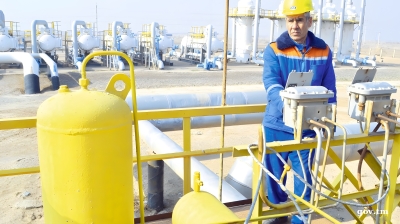The Vienna Institute for International Economic Studies (wiiw) has hiked its 2021 CEE growth forecast but lowered its predictions for 2022 and 2023 as the region’s economies slow down amid the withdrawal of coronavirus (COVID-19) pandemic aid.
In its winter forecast released on January 26, the wiiw raised its 2021 forecast of average growth in the region from the 5.4% forecast in October to 5.7%, but has lowered this year’s forecasts from 3.7% to 3.2%. The 2023 forecast has been cut to 3.0 from 3.5%, while the wiiw predicts 3.1% growth in 2024. The institute names inflation, the Ukraine crisis and COVID-19 as posing downside risks.
The Vienna Institute explained the expected 2.5 percentage point slowdown in growth this year on the performance of the region’s biggest economies, Russia and Turkey. Turkish growth is anticipated to slow to 3.5% this year, from a forecast 9.5% in 2021, as the country’s economic boom collapses, bringing with it a sharp depreciation in the lira and soaring inflation.
For Russia, GDP growth is forecast to slow to 2% this year from 4.5% last year, and to decline further to 1.5% in 2023, all on the assumption that tougher sanctions will be imposed over the Kremlin’s sabre-rattling in the crisis over Ukraine.
The wiiw noted, however, that Russia’s resilience to sanctions had improved. “The scope for forcing Russia to change its behaviour over Ukraine using economic sanctions is limited," pointed out Richard Grieveson, deputy director of wiiw.
Conservative monetary and fiscal policies have enabled Russia to build up substantial foreign exchange reserves of $630bn. Gross foreign exchange reserves, including gold, accounted for about 40% of Russia’s GDP in November. External debt is low, and there has also been a reduction in exposure to the US dollar in government bonds.
The wiiw now forecasts average growth in 2022 in the V4 states of Central Europe at 4.4%, followed by 4.4% in 2023. For 2022, it now views the growth prospects of Bulgaria (3.8%), Czechia (4.0%), Serbia (4.9%) and North Macedonia (3.5%) in a somewhat more positive light. Meanwhile, Belarus (1.0%), Bosnia and Herzegovina (2.5%) and Slovakia (3.9%) have experienced a downward revision.
The wiiw says high inflation is the biggest risk to economic recovery in the CESEE region – ranking ahead of both the conflict with Russia and the COVID-19 pandemic.
After 8.7% inflation last year, it expects a weighted average of 10.3% in CESEE this year – and in Turkey as much as 26.2%. However, the inflation rate in the Visegrád countries of Poland, Czechia, Slovakia and Hungary should average 5.2%.
It predicts that price increases will level off by the middle of the year because the worst distortions on the supply side – the problems with international supply chains – should have eased by then, while the high energy prices are also unlikely to persist.
The wiiw report, however, warns that inflation risks becoming entrenched in Eastern Europe if it leads to a wage-cost spiral. “If it does, we are in for a protracted period of inflation that will be significantly higher than most states in Eastern Europe have experienced since 2008,” said Grieveson.
Spending on energy and food accounts for a much higher share of total spending than it does in Western Europe. As a consequence, the governments of Hungary, Serbia and North Macedonia have already introduced price controls on food, not least for reasons of domestic political stability. Meanwhile, Poland and Romania are discussing a similar move.

News

US push to pressure Iran providing fresh incentive for trans-Caspian pipeline
Turkmenistan showing interest in the idea.

US–China soybean sales restart
According to Scott Bessent, US Treasury Secretary, the agreement marks a significant step towards restoring normalcy for American farmers.

Russia faces $50bn annual losses from oil sanctions as Lukoil exits international assets
Russia is expected to lose at least $50bn annually due to oil-related sanctions, as Moscow’s largest private oil producer Lukoil agrees to sell its international assets and Germany considers nationalising operations owned by state-run Rosneft.

Chicken and chips in Seoul - for Nvidia, Samsung and Hyundai
In a low-key fried chicken shop in southern Seoul, the leaders of Nvidia, Samsung Electronics and Hyundai Motor held an informal meeting on the evening of October 30.




